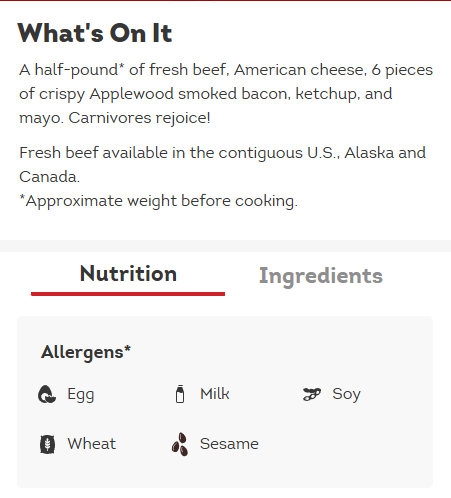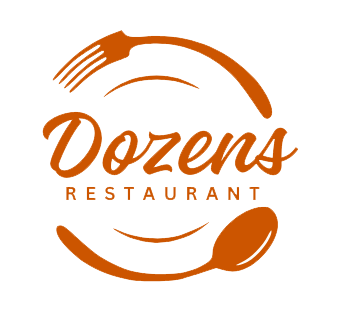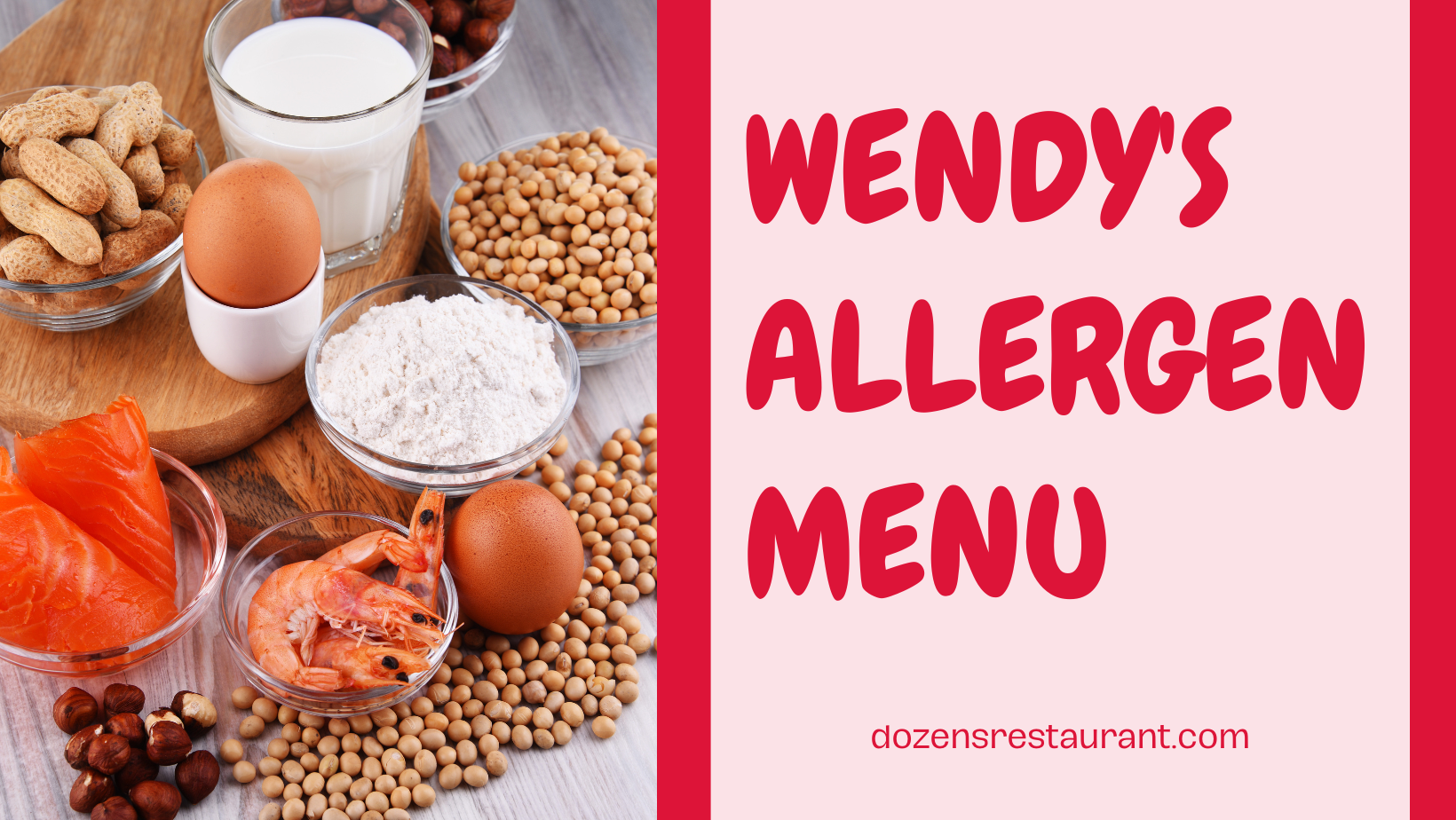Fast food lovers with food allergies or sensitivities now have an ally in making safe dining choices. Wendy’s, known for its fresh, never frozen beef and creative menu items, also provides detailed allergen information on its menu. In this guide, we’ll dive deep into everything you need to know about the Wendy’s allergen menu—from what allergens are tracked, to how you can customize your order, and tips for avoiding cross-contamination.
Introduction
For millions of people with food allergies, choosing what to eat when dining out is a constant challenge. Whether you’re allergic to dairy, eggs, wheat, or any other common allergen, having clear and reliable information can make all the difference between enjoying a meal and risking an adverse reaction. Wendy’s has taken a proactive stance by offering comprehensive allergen information on its website, in-store menus, and mobile app. This guide will help you navigate the nuances of the Wendy’s allergen menu so you can dine safely without compromising on taste.
With a commitment to transparency and customer safety, Wendy’s clearly labels ingredients that contain common allergens. By understanding how to read and interpret these labels, you can confidently make informed choices tailored to your dietary needs. This guide not only explains what each allergen means but also provides practical advice on customizing your order to avoid potential risks.
Understanding Food Allergens
What Are Food Allergens?
Food allergens are substances in foods that can trigger an immune system reaction in some people. These reactions can range from mild symptoms (such as hives or an upset stomach) to severe, life-threatening conditions like anaphylaxis. The most common allergens include:
- Dairy (milk and its derivatives)
- Eggs
- Wheat (and by extension, gluten)
- Soy
- Peanuts
- Tree Nuts
- Fish
- Shellfish (including crustaceans)
In some regions, additional allergens like sesame and mustard are also recognized as priority allergens.
How Allergies Affect Dining Out
When you dine out, you’re often faced with dishes prepared in a shared kitchen environment where cross-contact between allergenic and non-allergenic ingredients may occur. Understanding how a restaurant manages these risks and how to interpret their allergen information can help reduce your exposure to unintended allergens. With Wendy’s, you can access detailed allergen labels that not only indicate which ingredients contain allergens but also note where cross-contact might be possible.
Why an Allergen Menu Matters
For individuals with food allergies or sensitivities, the allergen menu is a vital tool for safe eating. Here’s why it matters:
- Transparency: It provides clear, detailed information about what’s in your food.
- Customization: Many menu items can be modified to exclude certain ingredients, allowing you to tailor your meal.
- Safety: While cross-contact cannot be entirely ruled out, knowing which ingredients pose a risk enables you to ask informed questions and take precautions.
- Empowerment: With easy access to nutritional and allergen data, you are empowered to make choices that protect your health.
Overview of Wendy’s Allergen Information
Wendy’s takes the responsibility of informing customers seriously. On their official website, mobile app, and in-store menus, you’ll find a dedicated “Nutrition & Allergens” section. Here’s what you can expect:
- Priority Allergen Labels: Wendy’s identifies the nine major allergens recognized by the U.S. Food and Drug Administration (FDA), which include milk, eggs, fish, crustacean shellfish, tree nuts, peanuts, wheat, soybean, and sesame. In some regions, additional allergens may be listed based on local regulations.
- Customization Options: Many items can be altered by simply removing an ingredient, such as cheese or specific condiments, to better suit your dietary needs.
- Disclaimers: Wendy’s notes that while they strive for accuracy, cross-contact is possible because of shared preparation areas. This disclaimer is especially important for those with severe allergies.
For instance, when you look at a popular item like the Baconator® or any of their sandwiches, you’ll see allergen icons next to the ingredient list. These icons indicate whether the item contains common allergens and if it’s prepared in an environment where cross-contact may occur.

Common Allergens in Wendy’s Menu
Let’s break down the most common allergens that you’ll encounter on Wendy’s menu, along with some tips on what to watch out for.
Dairy
What It Is:
Dairy products include milk, cheese, cream, and any derivatives from milk. Dairy is a common allergen that can trigger reactions in those with lactose intolerance or milk protein allergies.
Where It’s Found:
- Burgers and sandwiches often contain cheese (American, Swiss, cheddar, etc.).
- Frostys and shakes are made with real dairy.
- Certain sauces and dressings, such as ranch and blue cheese, contain dairy ingredients.
Tips for Dairy-Free Dining:
- Look for allergen icons or labels that indicate the presence of milk.
- Customize your order by asking for items “without cheese” or opting for a dairy-free version if available.
- Wendy’s often provides alternative options or clearly marks which items are not dairy-free. For example, some salads can be ordered without cheese, and beverages like Diet Coke and Sprite are naturally dairy free.
Eggs
What It Is:
Eggs are another common allergen, found in many sauces, dressings, and baked goods.
Where It’s Found:
- Many breakfast items (such as sausage, egg, and cheese sandwiches) contain eggs.
- Certain sauces and dressings may use egg yolks as an emulsifier.
Tips for Egg Allergies:
- Review the allergen menu carefully to check if an item contains eggs.
- When ordering breakfast, ask for modifications if possible (e.g., “egg-free” options or omitting egg-based sauces).
- Remember that many items can be prepared without egg-based components if you request customization.
Wheat & Gluten
What It Is:
Wheat contains gluten—a protein that can trigger reactions in those with celiac disease or gluten intolerance.
Where It’s Found:
- Breads, buns, biscuits, and English muffins are made from wheat.
- Many fried items, including chicken nuggets and fries, may be cooked in oil that has been used for breaded items.
- Some dressings and sauces might also use wheat-based ingredients as thickeners.
Tips for Gluten-Free Dining:
- Wendy’s allergen menu clearly indicates items that contain wheat.
- Many gluten-sensitive diners opt to order burgers or sandwiches “without the bun” or choose naturally gluten-free items like baked potatoes, chili (without the accompanying crackers), or salads (without croutons).
- Always mention your dietary restrictions when ordering, and double-check with the restaurant staff regarding potential cross-contact risks.
Soy
What It Is:
Soy is used in many processed foods and is often found in oils, dressings, and as a protein source in some menu items.
Where It’s Found:
- Soy-based oils are commonly used in cooking.
- Certain dressings, sauces, and even some processed cheeses include soy.
- Many menu items may have hidden soy ingredients, so the allergen icon for soy is particularly important.
Tips for Soy Allergies:
- Check the allergen menu for soy indications on each item.
- If soy is a concern, inquire about the type of oil used in cooking—some highly refined oils may be exempt from allergen labeling.
- Ask staff about cross-contact possibilities if you have a severe soy allergy.
Peanuts & Tree Nuts
What They Are:
Peanuts and tree nuts are not only common allergens but can also cause severe allergic reactions in susceptible individuals.
Where They’re Found:
- While many fast food chains try to minimize the use of peanuts, trace amounts or cross-contact can occur in shared facilities.
- Tree nuts may appear in certain salads, desserts, or even in side items like roasted pecans.
Tips for Nut Allergies:
- Look for allergen icons that highlight peanut and tree nut content.
- Some menu items may list “may contain” warnings indicating the risk of cross-contact.
- When in doubt, it is best to consult with a manager or choose items that have a lower risk of cross-contamination.
Fish & Shellfish
What They Are:
Fish and shellfish are less common in a typical Wendy’s menu but can sometimes be found in specialty items or seasonal offerings.
Where They’re Found:
- Although Wendy’s primarily focuses on beef, chicken, and salads, certain sauces (for example, a fish sauce in a dressing) might contain fish-derived ingredients.
- In regions where seafood is more prevalent, additional allergen information might be provided.
Tips for Fish/Shellfish Allergies:
- Always check the allergen menu and ask if any sauces or dressings might contain fish derivatives.
- Although the risk is generally lower at Wendy’s, careful review is important for those with severe seafood allergies.
Sesame and Other Allergens
What It Is:
Sesame seeds have become recognized as a significant allergen in many parts of the world. Additionally, some menus might list other less common allergens depending on regional requirements.
Where It’s Found:
- Sesame may be found in certain sauces or as a garnish on buns and breads.
- Wendy’s in certain countries (such as Canada or New Zealand) may list sesame seeds and other allergens like mustard.
Tips for Avoiding Sesame:
- Consult the allergen menu for sesame labeling.
- If you are allergic to sesame, it may be safest to avoid items that include garnishes or sauces where sesame is listed.
Using the Wendy’s Allergen Menu
Reading the Nutritional Guide
Wendy’s makes it simple by providing an online “Nutrition & Allergens” section. Here are some tips to make the most of it:
- Icons and Labels: Each menu item typically comes with a series of icons that indicate the presence of specific allergens. Look for icons related to milk, eggs, wheat, soy, etc.
- Ingredient Lists: For more in-depth information, you can view ingredient lists that detail what goes into each item. This is particularly useful if you’re on a strict elimination diet.
- Cross-Contact Disclaimers: Note the warnings about cross contact. Wendy’s emphasizes that while they mark allergens, shared cooking surfaces and oils might introduce trace amounts of allergens.
Customizing Your Order
One of the best features of dining at Wendy’s is the ability to modify your order. Here’s how you can customize items safely:
- Remove or Substitute Ingredients: If an item contains an allergen you wish to avoid, ask if it can be prepared without that ingredient. For example, you can request a burger “without cheese” or a sandwich “without the bun.”
- Ask About Preparation Methods: Inquire how items are prepared, especially if you have a severe allergy. Understanding whether your food is cooked in a shared fryer or on a separate grill can help you make an informed decision.
- Use the Mobile App: The Wendy’s mobile app also includes allergen information and often allows you to customize your order even before you reach the counter. This helps ensure that your instructions are clear.
In-Restaurant and Online Options
- At the Counter: When dining in, always inform the staff of your allergy. A quick mention of “I have a [specific allergen] allergy” can prompt extra care.
- Online Orders: When ordering through the website or mobile app, take advantage of the customization features. There is often a “special instructions” field where you can mention your specific needs.
- Call Ahead: If you’re unsure about a particular menu item, consider calling ahead to speak with a manager or someone in customer service to confirm details regarding allergens.
Frequently Asked Questions (FAQ)
What allergens does Wendy’s list on its menu?
Wendy’s in the United States highlights the nine major allergens as defined by the FDA: Milk; Eggs; Fish; Shellfish; Tree Nuts; Peanuts; Wheat; Soybean; Sesame
In addition, in other countries (such as Canada and New Zealand), Wendy’s may list additional priority allergens, such as mustard and sulphites.
Can I customize my order to be allergen-free?
Yes! Wendy’s offers extensive customization options. Many items can be ordered “without” certain ingredients (e.g., no cheese, no bun, no croutons) to help you avoid allergens. Use the “special instructions” field when ordering online or mention your needs when ordering in person.
Are cross-contact risks eliminated when I customize my order?
While customization helps, cross-contact can still occur in shared preparation areas. Wendy’s advises that they cannot guarantee any item is completely free of allergens due to the nature of their cooking processes.
What are some safe options for gluten-free diners?
Popular gluten-free options at Wendy’s include: Baked potato (with your choice of toppings); Chili (without the crackers); Salads (without croutons); Frostys; Burgers ordered “without the bun”
Do Wendy’s Frostys contain allergens?
Yes, the classic Frostys (both chocolate and vanilla) contain dairy. They are typically gluten free; however, if you have a dairy allergy or intolerance, you should avoid them or seek alternative dessert options.
Where can I find the most up-to-date allergen information?
For the latest allergen and nutritional information, always refer to the official Wendy’s website or mobile app. The “Nutrition & Allergens” section is regularly updated to reflect any changes in recipes or ingredients.
Conclusion
Dining out with food allergies or sensitivities doesn’t have to be a stressful experience. With detailed resources like the Wendy’s allergen menu, you can confidently plan your meal, avoid unwanted allergens, and enjoy your food worry-free. This comprehensive guide is designed to help you understand every facet of Wendy’s allergen policies—from reading nutritional labels to customizing your order.
By staying informed and proactive, you can continue to indulge in your favorite fast food while safeguarding your health. Whether you are grabbing a quick lunch on a busy day or planning a family dinner, let this guide serve as your trusted companion for a safe and delightful dining experience at Wendy’s.
Get more for less with the Wendy’s 4 for 4 meal deal.

